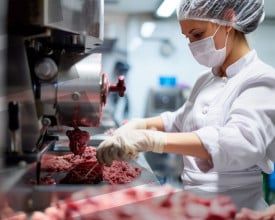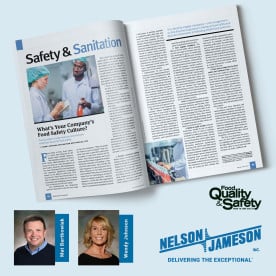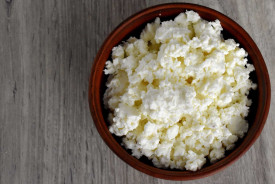bacteria
- July 02, 2021
Summer is here! What a perfect opportunity to get outside and enjoy the warm summer air we've all been craving! For some individuals, spending time outdoors could involve hiking,
- November 09, 2020
According to the FDA, "one of the most commonly documented food safety problems in plants have involved sanitation monitoring, including checking food-contact surfaces and plant cleanliness" (Schug, para. 1). To make matters even more complicated, the
COVID-19 pandemic disrupted normal operations as well for countless food and beverage manufacturers. Disruptions may occur due to limited staff because of layoffs, social distancing requirements, or sickness. These situations on top of the normal expectations of having a clean food plant, can lead to the need of resources for food safety sanitation.It is essential that food manufacturers create safe, quality food, therefore, routine practices need to continue, and additional sanitation protocols may need to be added. Employers also need to ensure a safe environment for their staff, including minimizing the risk of being exposed
- October 30, 2020
Significantly minimize food vulnerabilities with Nelson-Jameson's food defense product solutions! According to the FDA, food defense is defined as, "the effort to protect food from acts of intentional adulteration" (Food Defense, 2020, para. 1). Intentional adulteration could include various contaminations that are intended to cause harm to the public. In order to prevent and protect from harmful contamination, a food defense plan needs to be established. A food defense plan first consists of your facility completing a vulnerability assessment. This assessment is to determine where in the facility's processes pose the greatest risk for contamination. Second, mitigation strategies need to be selected for identified vulnerabilities, and lastly, corrective action needs to be implemented. Nelson-Jameson has products that are designed to assist with mitigation and preventative strategies within your facility and aid in your food defense plan:
• Use color-coded personnel identification
- December 03, 2019
Wash. Your. Hands. This simple act can do so much to prevent the spread of viruses and bacteria. Lately, this has been highlighted most unwelcomingly
- September 10, 2019
At Nelson-Jameson, we never take chances when it comes to food safety, and neither should you. That's why we've put together a comprehensive flyer that is filled with the products you need to create an effective food safety program in your plant. Even more promising than the quality products is the manufacturers that are represented—we’ve included top products from 3M™, Hygiena™, Nasco, and Neogen®. Let us help you implement the Environmental Testing Solutions that work for your plant.
- July 30, 2018
In recent months, it has come to our attention that there has been an increase in quality problems caused by Heterofermentative lactic bacteria that are not from starter cultures. These bacteria have been found growing on biofilms in the pasteurizer regen section of milk HTST’s, in some silage inoculants, in dairy powders and liquids used to fortify milk for cheesemaking, and on individual farms with certain cleaning issues. Once these are in the milk, they can’t be removed by pasteurization and will carry through into the cheese and whey powder by-products.
The Center for Dairy Research (CDR) in Madison has seen an increase in quality defects in cheese including off flavors such as “sour” gas formation in retail packages of cheese and cracking defects in blocks of cheese. Many companies are starting to include specifications for low spore count non-fat powders, liquid condensed skim and UF milk products, and also whey powders used in many other foods.
- June 17, 2016
Food safety concerns are on all food manufacturers’ minds (and, honestly, probably in their dreams too), so it is critical to know how bacteria grow. Armed with that knowledge, we are better able to stay ahead of bacterial contamination in the food manufacturing facilities.
Often, when I was in the plant environment, I would refer back to a case study put together by the Royal Society for Public Health in 2010. It laid out some excellent basics on growth factors for bacteria in a concise manner that readers
- May 26, 2016
What is the difference between water activity and water “moisture” content? Well, it all depends on what you want to achieve. Do you want to monitor the amount of water and dry matter present in a product? Or do you want to increase and monitor the shelf stability of a product?
“Water ‘moisture’ content is the amount of water contained in a product”. Measuring water “moisture” content is better used to determine quality of the process. For example, if the product is a cheese powder that is spray dried, it is common practice to measure the water “moisture” content to determine yield and to ascertain if your drying process is running according to the diagnosed plan.






